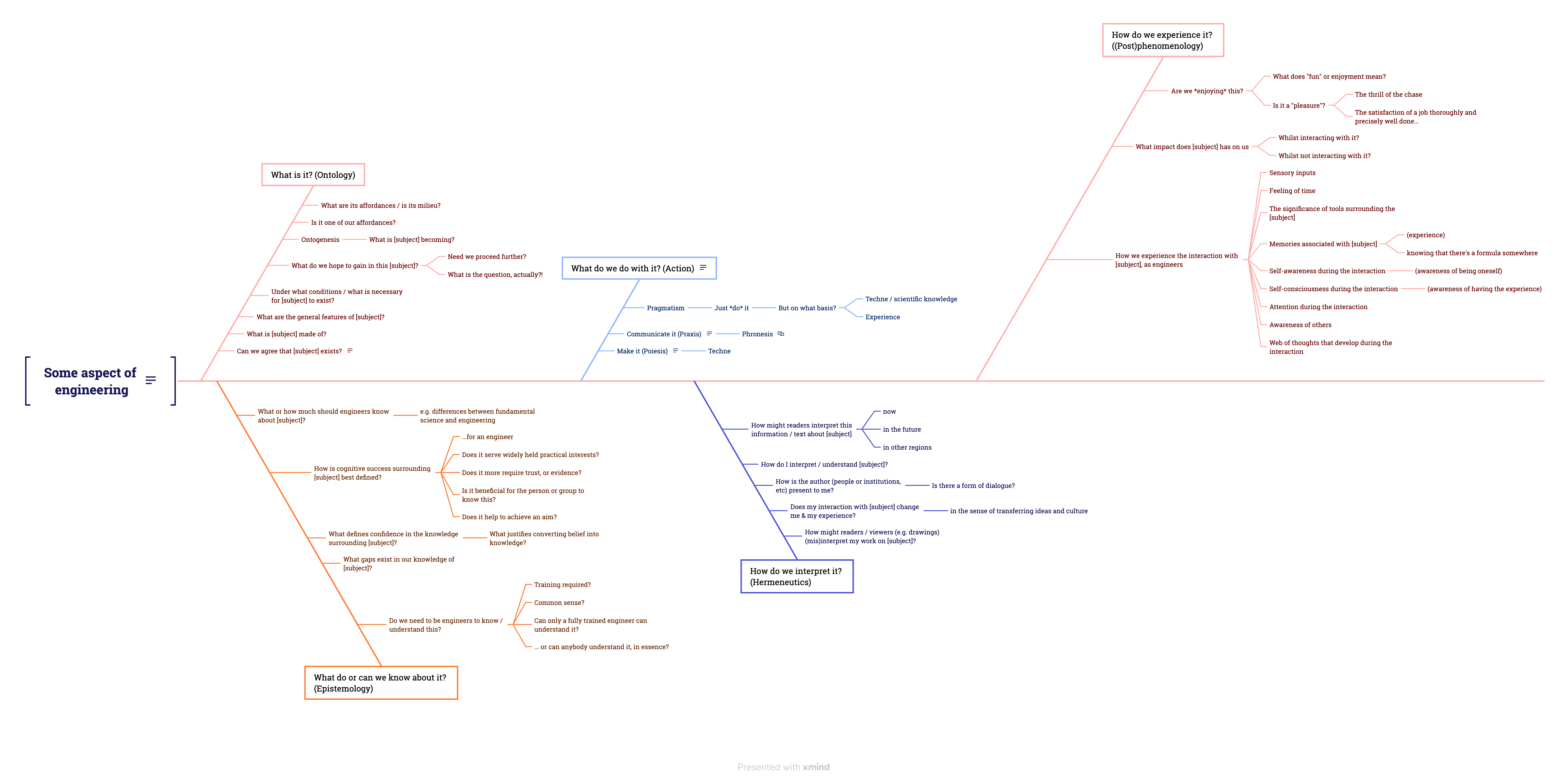Why I’m writing this
Extracting something interesting to say out of what feels like a good - but perhaps vague - initial notion can be tricky and frustrating, especially for someone like this engineer trying to be philosophical about the engineering life. That’s what happened when I was working on a now postponed post: I found myself getting stuck in the descriptions, on the surface, without finding a way to get satisfyingly deep into what I was trying to say: more drifting than drafting.
Then I remembered another (unfinished) draft from an (unfinished) series on engineering tools and I thought it time to put that tool - the Ishikawa diagram - to use.
The Ishikawa diagram
Also known as the fishbone diagram because of the way several themes jut out from a central theme’s spine, this isn’t as uniquely an engineering tool as the FMEA, but it is much used in industrial settings, mostly in the context of quality investigations. Looking back, I found a wry post of mine about it from back in 2012, where, whilst being more fixated on the overly literal depiction of the fishbone diagram, I listed out the typical topics for a quality investigation (the several ‘M’ words like “Machine”, “Manpower”, “Metrology”, etc, as titles).
Fundamentally, it’s about seeding ideas to be condensed around common themes to ensure that nothing obvious is overlooked when searching for a root cause. It’s important to note here that it can also be an efficient tool, in that clearly irrelevant or non-contributing aspects can quickly be disregarded, allowing focus on the trickier stuff.
The Phishikawa diagram…
… or “Phishbone” diagram, is the philosophical version of the original. Its bones consist of key philosophical themes to aid in the search for the roots of the topics we want to consider. In this case, it won’t initially be very efficient, as I’ll need to spend time with each topic, these being:
- Ontology (attempting to describe how a topic is)
- Epistemology (understanding what we can know about the topic)
- Acting and working (understanding what modes of action and knowledge are involved - based on Aristotle’s concepts of poiesis (making) & praxis (politics))
- Hermeneutics (how we interpret texts and artefacts resulting from this topic)
- Phenomenology (how we experience this topic personally)
This is what it looks like, in its first iteration:
